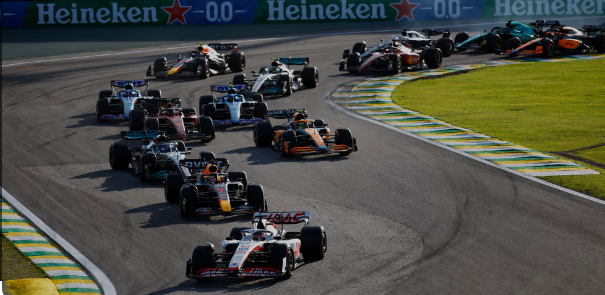
Formula One, commonly known as F1, stands as a global auto racing competition. It represents the pinnacle of single-seat, open-wheel, and open-cockpit professional motor racing. Oversight and authorization for Formula One racing are provided by the FIA, which stands for the Fédération Internationale de l’Automobile or the International Automobile Federation. The term ‘Formula’ in Formula One originates from the prescribed set of regulations that both the participating cars and drivers are required to adhere to.
Formula 1 racing has its roots in Europe during the 1920s and 1930s, evolving from similar racing competitions of that time. The standardization of racing rules by the FIA in 1946 laid the foundation for Formula One racing. The inaugural Formula One World Drivers’ Championship took place in 1950, marking the commencement of the first world championship series.
In addition to the world championship series, numerous non-championship F1 races were conducted, but due to escalating costs, these races were discontinued after 1983.
Each F1 team is allowed a maximum of four drivers per season, and the support staff associated with each team plays a crucial role in determining the team’s success.
The number of Grand Prix races in a season has changed over the years, beginning with seven races in 1950. The count steadily rose, reaching a peak of 20 races annually in 2012. Currently, a typical season consists of 19 to 20 Grand Prix races, with the 2015 F1 season having 19 races, and 8 of them already completed.
Each Grand Prix is hosted by a different country and named after the host nation, such as the Australian Grand Prix or the Monaco Grand Prix. However, a Grand Prix can take place in the same or different cities of the host country each year.
For a Grand Prix race, the minimum total distance, including all pre-defined laps, must be 300 km or 190 miles, except for the Monaco GP, which has a standard distance of 260 km or 160 miles.
As of 2015, the F1 World Championship allows 10 teams, each with two cars, making a total of 20 cars eligible for competition. However, FIA regulations permit a maximum of 26 cars for the championship.
Formula One cars, designed for Formula One competitions, are open-wheel, open-cockpit, single-seat racing cars equipped with front and rear wings and an engine located behind the driver. F1 races occur on specially built racing tracks called circuits, sometimes on closed public roads.
The construction of an F1 car involves two main components: the chassis and the engine. Chassis are made from carbon fiber and must weigh at least 702 kg (1548 lbs), including the driver and tires, but excluding fuel. The dimensions of an F1 car must be a maximum of 180 cm in width and 95 cm in height, with no specified limit on length.
F1 cars must deploy 1.6-liter turbocharged V6 engines since the regulation changes in 2014. They use semi-automatic sequential carbon titanium gearboxes with 8 forward gears and 1 reverse gear, featuring rear-wheel drive.
The steering wheel of an F1 car serves multiple functions, including changing gears, adjusting brake pressure, radio communication, and fuel adjustment.
Formula One cars use a controlled mixture of ordinary petrol for fuel, which can only contain commercial gasoline compounds, not alcohol compounds.
F1 cars have been equipped with smooth tread, slick tires since 2009. Front tires have a width of 245mm, while rear tires have widths of 355mm and 380mm.
Disc brakes with a rotor and caliper at each tire are employed by Formula One cars. They can accelerate from 0 to 100 mph and decelerate back to 0 in under 5 seconds, with top speeds reaching about 300 kmph or 185 mph on average.
Safety is a top priority in Formula One. Helmets are compulsory and must meet FIA standards. Helmets are fire-resistant, hand-painted, and weigh around 1.2 kg. HANS (Head and Neck Support) is designed to protect the driver’s vertebrae and prevent head collisions with the steering wheel in accidents. It is made of carbon fiber and is attached to the seat belt. Drivers’ clothing is multilayered, fire-resistant, and undergoes thermal testing. Nomex, a fiber brand, is used for suits, which can withstand temperatures up to 700-800 degrees Celsius for more than 10 seconds. The clothing includes HANS, designed to protect against head and neck injuries, and is washed and dry-cleaned multiple times before testing.




